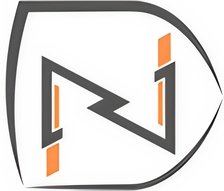
| Entity-relationship (ER) diagrams are visual representations of a data model for a system. It defines entities, which can be objects or concepts within the system, as well as the relationships between them. ER diagrams are commonly used in database design to help developers understand the structure and organization of the data that needs to be stored. It also describes the relationships between different entities, such as customers and products, and can help improve the system’s efficiency. In addition, ER diagrams illustrate the logical structure of a system, which can help developers identify potential design errors and simplify the development process. |
An ER diagram consists of several key components that help represent the structure of a database. Here’s a breakdown of these components:
Component | Definition | Sign Representation | Example |
Entity | real objects and concepts with distinct existence | rectangles | hospital, patient, doctor |
Attribute | characteristics of entities | ovals | patient's attributes are name, age, gender & diagnosis |
Relationship | show how entities are related | diamonds | doctor - treatment - patient |
Primary Key | uniquely identify each instance of an entity | undunderline PK | patient_id |
Foreign Key | attributes that reference the primary key of another entity | dashed line | patient_id in the diagnosiss entity |



|
Relationships show how entities are related to one another. A database consists of various entities that establish different types of relationships with one another within a project. These relationships can be classified as one-to-one, one-to-many, or many-to-many. For example, between hospitals and patients, doctors and patients, and patients undergoing treatments. A patient may experience various diagnostic tests, such as ultrasound, X-rays, and blood tests. A cancer patient undergoes multiple treatments, such as radiotherapy, chemotherapy, and surgery, while a single chemotherapy treatment is prescribed for many patients. As a result, the database enforces specific limitations that ensure data consistency. The purpose of entity relationships is to manage unnecessary data load and prevent alterations or deletions that could negatively impact the data’s intended purpose. This approach helps ensure data accuracy and integrity. In addition to helping ensure accurate data collection, it also helps ensure proper data use. |
Entity Relationship Diagrams are crucial for designing databases, providing clear visual models that simplify the relationships among entities and their attributes, accordingly making the work process much more efficient. common reasons of ER-Diagram are given below
Visualization | The ER diagram provides a clear overview of the database structure. This helps visualize the complex relationships and data flow in the database, making it easier to understand and visualize. |
Efficient | ER diagram’s role as a foundation for a database, providing required entities, attributes, and relationships are considered. It helps normalize the database, reduce redundancy, and ensure data integrity. |
Communication | ER diagrams encourage collaboration among database designers, developers, and stakeholders, ensuring a mutual understanding of the data model. That normalizes requirements by delivering a visual tool for discussing and validating the data model with stakeholders. |
Error Prevention | ER diagrams play a vital role in identifying possible issues during the design process, reducing the possibility of database errors. Diagrams are useful for troubleshooting and maintaining databases, making them easier to understand and fix. |
Documentation and Maintenance | An ER diagram provides a complete description of the database schema. It simplifies the process of maintaining and updating the database over time. Diagrams assist with version control by visualizing modifications to the data model, making it easier to track and manage thoes changes. |
Query Optimization | The ER diagram ensures a database structure that promotes efficient data retrieval and manipulation, as a result enhancing query optimization. |
Support System Development | ER diagrams play a crucial role in the system development process by defining data requirements and relationships. The diagrams can influence application logic, system versions, and user interfaces. |
|
Entity-relationship (ER) diagrams illustrate the relationships between different entities in database design. These diagrams use specific symbols, including arrows, to represent relationships. In an ER diagram there are several types of line and its endpoint accourding to the chosen notation style. A set of arrows can illustrate different types of relationships between entities; for example:
*Multiplicity: The outer edge of the relationship *Mandatory: this relationship come mandatory. it can be zero or one *Optiona: This relation is optional *Empty zero: Optional relationship *Vertical line [ | ]: A Multiplicity of one and a mandatory is represented by a vertical line which *Crow’s foot notation: Many relationship |
In a relationship, there are a number of attributes corresponding to the two entities involved. Relationships between these objects are defined by expressions, which usually refer to their primary and foreign keys. Determine whether a relationship is one-to-one, one-to-many, or many-to-many.
ER diagram components can be compared with parts of speech, showing how an ER diagram is related to natural language.